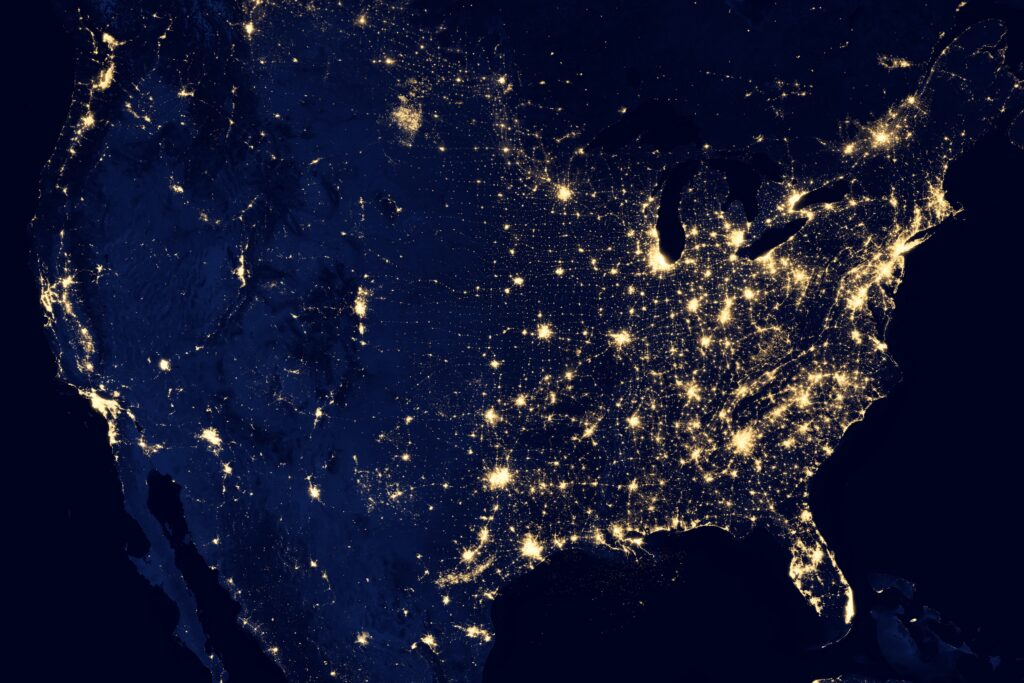The Ontario Energy Board introduced a new pricing plan, starting on May 1st, several utility providers will be able to offer the new Ultra-Low overnight electricity rates. The goal, according to Ontario’s Energy Minister’s office, is to reduce energy costs, and make the grid more efficient, which will help reduce costs for all ratepayers. This would be great for residential and small businesses who could save a few bucks, but why now, and how does it aim to achieve a more efficient grid?
Why does the grid need to be more efficient?
Canada, like most developed nations, is headed towards more electrification on the road to decarbonization. With the population continuing to grow and an increasing number of electric vehicles on the road, the electricity demand is only set to increase. Relying on people to reduce their energy usage is not a feasible long-term solution, as conservation efforts can only go so far before consumption is back up. Therefore, the grid in Ontario needs to either expand its capacity or increase its efficiency to ensure the electricity demand can be met, and getting people to use energy at different times would certainly be easier and cheaper than building more power plants.
Regardless of when Ontario needs new power plants, the currently operating plants will also require refurbishments and repairs. The ongoing refurbishments of the Darlington Nuclear Generating Station are set to complete by 2026, which puts more of the demand for electricity towards the reliable-but-costly option which is natural gas. The OEB islooking to prevent high energy peaks whenever possible, as the more efficient grid will also be cheaper in the long run. Much like how an often congested highway requires more repairs, the grid’s infrastructure also needs constant maintenance and upgrades to ensure peaks are handled, and when more generation capacity is eventually introduced, there will need to be a higher emphasis on efficiency than ever before.
How does this make energy cheaper?
Unless the capacity is increased, the OEB will have to depend on the current grid operating efficiently. The OEB’s goal is to shift the demand towards baseload generation, powered by nuclear energy or run-of-the-river hydroelectricity plants. These are power plants that continuously operate 24/7 to meet the minimum energy demand levels with little to no greenhouse gas emissions involved. Some of the additional demand can be met through intermediate power generation methods such as hydroelectricity dams or wind and solar, which are less dependable but can often help mitigate some of the demand.
However, during times of high energy demand, the grid needs flexible forms of electricity generation that can adjust their output quickly. Natural gas plants account for approximately 10% of Ontario’s total generation output for just that purpose. However, the high GHG emissions and increasing cost of natural gas ensure that energy consumers are not only paying an environmental cost but also facing increasing electricity costs as a direct result of gas prices.
Electricity suppliers to the grid are constantly bidding for the amount of electricity they can produce at a certain price. Gas-powered electricity faces significantly more volatility, whereas nuclear energy and hydroelectricity would be a lot more consistent in their costs. The OEB is effectively asking smaller residential and commercial energy consumers to shift the demand away from the peak times, so there can be lesser reliance on natural gas.

So whose responsibility is this?
The solution to Ontario’s current and future energy problem is to convince people to use less energy, but that’s not feasible. This is why OEB is introducing incentives to encourage more responsible usage rather than reduced usage. Every residential, commercial, or industrial sector will eventually consume more as the energy transition continues in Canada. The Ontario grid will continue facing challenges as electrification and decarbonization become more prevalent. The best way to support the grid is actually to understand the impact of one’s energy use and proactively try to manage it.
Ontario’s grid operator, the Independent Electricity System Operator (IESO) has been encouraging proactive management to support the grid. The IESO and OEB are actively incentivizing both large and small energy consumers to either reduce energy consumption or become more responsible about when they consume. The target is a lower energy cost and a more efficient grid, but the responsibility now falls onto the consumer to make it happen.
Not sure about where you can improve?
We can answer your questions when it comes to energy management. Our mission is to enable responsible energy consumption for large energy users through data and visibility, and we’ve helped many large energy consumers across Ontario and Alberta reach their efficiency targets. Feel free to reach out with any questions you may have when it comes to improving your operational efficiency or looking for ways to reduce your consumption.

